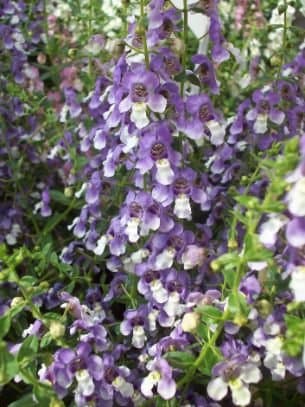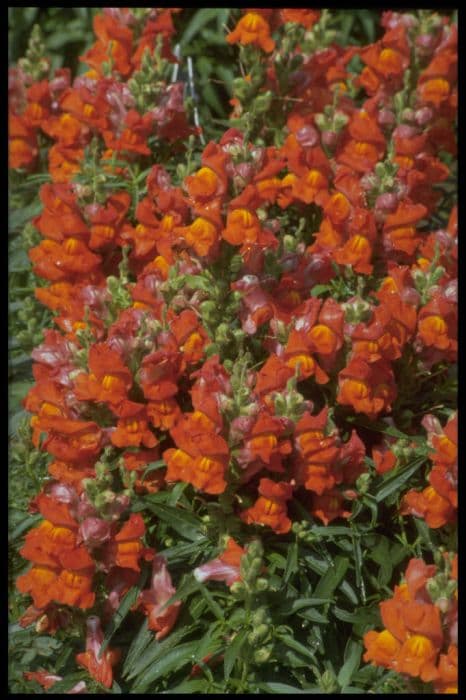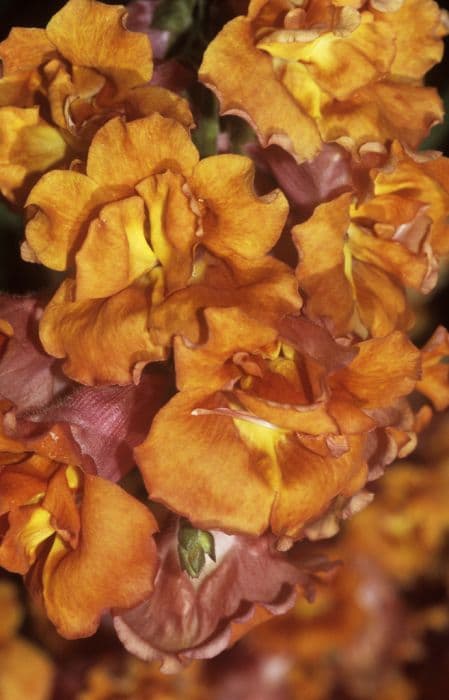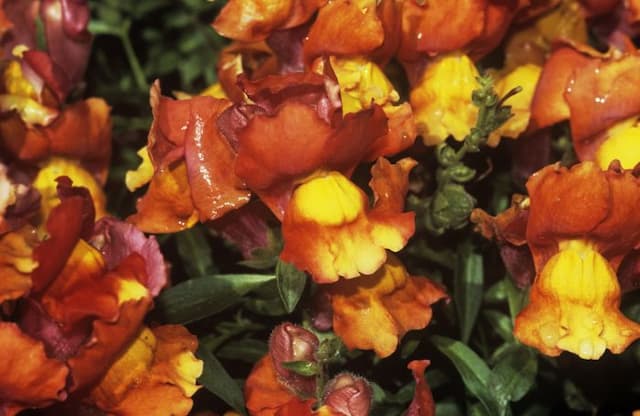Heartleaf Globe Daisy Globularia cordifolia

ABOUT
The plant known as the heartleaf globe daisy is a charming and attractive perennial that features compact, evergreen foliage. Its leaves are heart-shaped, with a rich, deep green color that provides a lush, dense mat-like base. The leaves are smooth and leathery in texture, offering a striking contrast to its flowering stems. As the growing season progresses, the heartleaf globe daisy puts forth globular flower heads that bloom atop slender, leafless stems that rise above the foliage. The blossoms are typically a captivating blue or sometimes violet shade, with numerous small, tubular flowers tightly packed together in a spherical arrangement, giving the appearance of a single, large, round flower from a distance. These charming blooms provide a delightful display in spring and early summer and are often visited by an array of pollinators such as bees and butterflies. The heartleaf globe daisy has a tufted growth habit, forming a neat, cushion-like mound. Its growth form lends itself well to rock gardens, alpine garden settings, and as a groundcover. While it has a modest presence, the plant's blossoms add a splash of color that can brighten up any garden space. The combination of heart-shaped leaves and spherical blue blossoms makes the heartleaf globe daisy a distinctive plant that not only contributes to the aesthetic of a garden but also supports local ecosystems with its inviting flowers.
About this plant
 Names
NamesFamily
Plantaginaceae
Synonyms
Heartleaf Globe Daisy, Cushion Globularia
Common names
Globularia nudicaulis, Globularia cordifolia var. nudicaulis, Globularia cordifolia var. bavarica, Globularia elongata, Globularia cordifolia var. elongata
 Toxicity
ToxicityTo humans
Globularia cordifolia, commonly known as heartleaf globe daisy, is not widely recognized for its toxicity to humans. There is limited information regarding its potential effects if ingested. However, as with many plants, people vary in their sensitivity to different plant species. If there were any toxicity associated with heartleaf globe daisy, symptoms might include gastrointestinal upset, such as nausea, vomiting and diarrhea. It's always prudent to avoid ingesting plants that are not confirmed to be safe for consumption, and to seek medical advice if ingestion has occurred and you are experiencing adverse symptoms.
To pets
Heartleaf globe daisy is not commonly listed as a toxic plant to pets. However, individual animals can sometimes react to plants that are not typically considered poisonous. The most common signs of plant toxicity in pets include gastrointestinal upset such as vomiting or diarrhea, lethargy, or more severe symptoms like difficulty breathing or changes in heart rate if the plant were toxic. Since information on the toxicity of heartleaf globe daisy to pets is not well-documented, pet owners should exercise caution and prevent their animals from ingesting the plant. If a pet does eat parts of this plant and exhibits abnormal signs, it is important to consult a veterinarian.
 Characteristics
CharacteristicsLife cycle
Perennials
Foliage type
Evergreen
Color of leaves
Dark green
Flower color
Blue
Height
1 feet [30 cm]
Spread
2 feet [60 cm]
Plant type
Shrub
Hardiness zones
5
Native area
Europe
Benefits
 General Benefits
General Benefits- Low Maintenance: Globularia cordifolia, commonly known as heartleaf globe daisy, requires minimal care once established, making it ideal for gardeners seeking low-maintenance plants.
- Drought Tolerance: Heartleaf globe daisy is highly drought-tolerant, which makes it a good choice for xeriscaping and dry garden conditions.
- Garden Aesthetics: With its round, blue flower heads and dense foliage, it adds a unique texture and a splash of color to garden landscapes.
- Ground Cover: Its compact and spreading habit make it an effective ground cover, helping to reduce weeds and soil erosion.
- Attracts Pollinators: The flowers of the heartleaf globe daisy attract bees and butterflies, promoting biodiversity and benefiting adjacent plants.
- Seasonal Interest: It predominantly blooms in late spring and early summer, offering seasonal interest in the garden during these times.
- Hardiness: This plant is suitable for a range of hardiness zones, generally between 5 and 9, making it adaptable to various climates.
 Medical Properties
Medical Properties- Anti-inflammatory: Globularia cordifolia is traditionally used for its anti-inflammatory properties.
- Diuretic: It has been used to promote kidney function, increasing urine production.
- Hepatoprotective: Some resources suggest it may have a role in supporting liver health.
- Cardiotonic: There is some historical use of the plant for strengthening the heart, although modern evidence might be lacking.
- Antimicrobial: Globularia cordifolia has been used in traditional medicine for its potential antimicrobial effects.
- Antioxidant: The plant may contain antioxidants which could help in preventing oxidative stress.
 Air-purifying Qualities
Air-purifying QualitiesThis plant is not specifically known for air purifying qualities.
 Other Uses
Other Uses- Globularia cordifolia, commonly known as heartleaf globe daisy, is sometimes used in butterfly gardens as it can attract a variety of butterflies with its flowers.
- The heartleaf globe daisy's compact growth habit makes it suitable as a ground cover in rock gardens, contributing to both aesthetics and soil stability.
- This plant is utilized in water-wise landscaping designs to create visually appealing spaces that require minimal irrigation.
- Heartleaf globe daisy's resilience in poor soil conditions makes it a good candidate for revegetation projects in degraded areas.
- Gardeners might use heartleaf globe daisy's evergreen foliage as a backdrop for seasonal flowering plants, providing year-round greenery.
- Due to its dense form, heartleaf globe daisy can be planted to fill gaps in borders and beds, giving gardens a fuller look.
- The plant's distinctive blue flowers can be used as cut flowers in floral arrangements, albeit they are not traditionally commercial cut flowers.
- Heartleaf globe daisy can be grown in containers on patios and balconies, offering an easy maintenance display of color and foliage.
- In hobbyist terrariums, the compact size of heartleaf globe daisy makes it an interesting plant choice to create miniature landscapes indoors.
- The plant is sometimes used as a living mulch that can help retain soil moisture and inhibit weed growth due to its ground-hugging characteristic.
Interesting Facts
 Feng Shui
Feng ShuiThe Heartleaf Globe Daisy is not used in Feng Shui practice.
 Zodiac Sign Compitability
Zodiac Sign CompitabilityThe Heartleaf Globe Daisy is not used in astrology practice.
 Plant Symbolism
Plant Symbolism- Endurance: Due to its hardy nature and ability to thrive in poor conditions, Globularia cordifolia, commonly known as Heartleaf Globe Daisy, symbolizes endurance and the ability to withstand adversity.
- Adaptability: Heartleaf Globe Daisy's versatility in growing in varied environments signifies adaptability and the capacity to thrive in different life circumstances.
- Persistence: With its persistent growth habit, this plant embodies determination and the persistent pursuit of one's goals despite challenges.
- Simplicity: The simple beauty of the Heartleaf Globe Daisy's blue flowers represents an appreciation for simplicity and unpretentiousness.
 Water
WaterHeartleaf globe daisy prefers consistent moisture but does not like to be waterlogged. Water the plant deeply once a week, allowing the soil to dry out slightly between waterings. During hot, dry periods, water twice a week, providing about one gallon per watering for an established plant. Reduce watering in the winter when the plant is dormant. Always water at the soil level to avoid wetting the foliage, which can lead to fungal diseases.
 Light
LightThe heartleaf globe daisy thrives in full sun to partial shade. The best spot for this plant is one where it receives at least six hours of sunlight daily. Some afternoon shade can be beneficial in extremely hot climates to prevent scorching of the leaves.
 Temperature
TemperatureHeartleaf globe daisy performs best in temperatures between 60°F and 80°F. The plant can survive minimum temperatures down to about 20°F but may suffer damage. Maximum temperatures should not consistently exceed 90°F for optimal growth. Generally, this plant is resilient to a wide range of temperatures typical of temperate climates.
 Pruning
PruningPruning the heartleaf globe daisy encourages bushier growth and can help maintain its compact shape. Prune lightly after the plant has flowered to remove spent blooms and any dead or damaged stems. The best time for pruning is late winter or early spring, before the onset of new growth.
 Cleaning
CleaningAs needed
 Soil
SoilThe Heartleaf Globe Daisy (Globularia cordifolia) prefers a well-draining soil mixture with plenty of organic material. A mix composed of equal parts loam, sand, and peat or compost works well. The ideal soil pH for this plant ranges from slightly acidic to neutral (pH 5.5 to 7.0).
 Repotting
RepottingHeartleaf Globe Daisy does not require frequent repotting and can be repotted every 2-3 years. It's best to repot in the spring when the plant shows signs of being root-bound or the soil is exhausted.
 Humidity & Misting
Humidity & MistingHeartleaf Globe Daisy thrives in moderate humidity levels, typical of outdoor conditions. Although it is not particularly humidity-sensitive, avoiding excessively dry air can be beneficial.
 Suitable locations
Suitable locationsIndoor
Place in bright light with some direct sun.
Outdoor
Plant in full sun to partial shade.
 Life cycle
Life cycleGlobularia cordifolia, also known as heartleaf globe daisy, begins its life cycle as a seed which germinates in late winter to early spring when moisture and temperature conditions are favorable. The seedling grows into a herbaceous perennial plant with a low-growing, mat-forming habit, developing a rosette of spoon-shaped, evergreen leaves. During late spring to early summer, the plant produces round, dense flower heads composed of tiny, tubular flowers that are typically blue or violet, attracting various pollinators. After pollination, seeds develop and are dispersed by wind or wildlife. The plant may enter a period of dormancy during hot, dry summers or cold winters, preserving energy for the next growing season. Heartleaf globe daisy can also propagate vegetatively through its spreading mat, ensuring its presence in the habitat year after year.
 Propogation
PropogationPropogation time
Spring-Early Summer
The Heartleaf Globe Daisy (Globularia cordifolia) is best propagated during the spring to early summer seasons, when the temperatures are mild and conducive to growth. The most popular method of propagation for this plant is through division. Dividing the plant involves carefully separating the clumps into smaller sections, ensuring that each new section has a portion of the root system intact. This is typically done by gently teasing the roots apart with your hands or using a sharp knife to cut through tougher clumps. Once separated, these divisions can be immediately planted into well-draining soil, spaced at least 6 to 10 inches (15 to 25 centimeters) apart to allow for ample growth. Regular watering and ensuring the soil stays consistently moist without becoming waterlogged will help the new divisions to establish.









